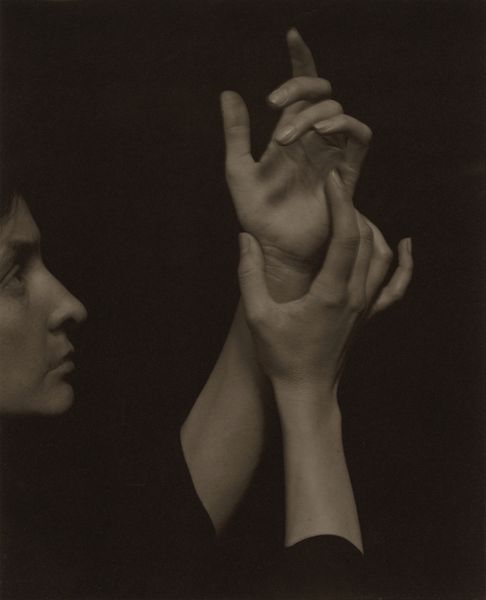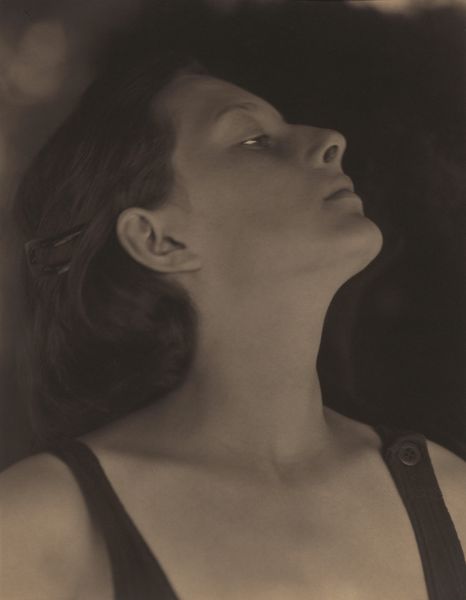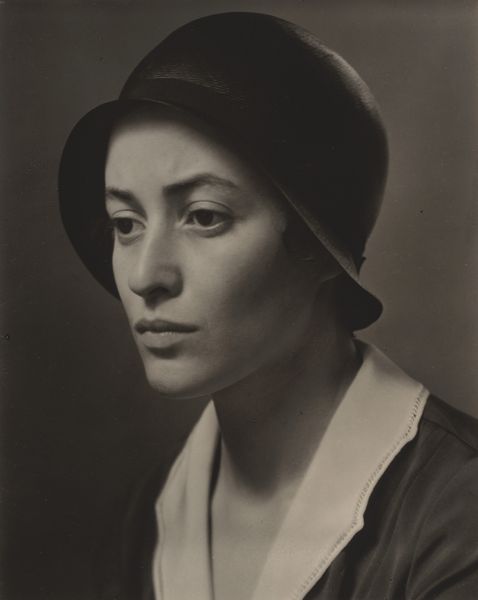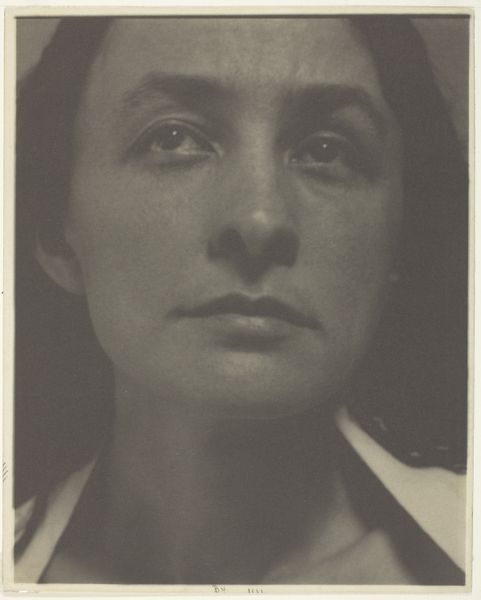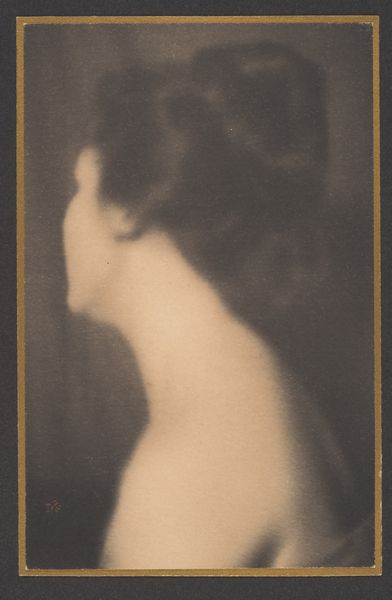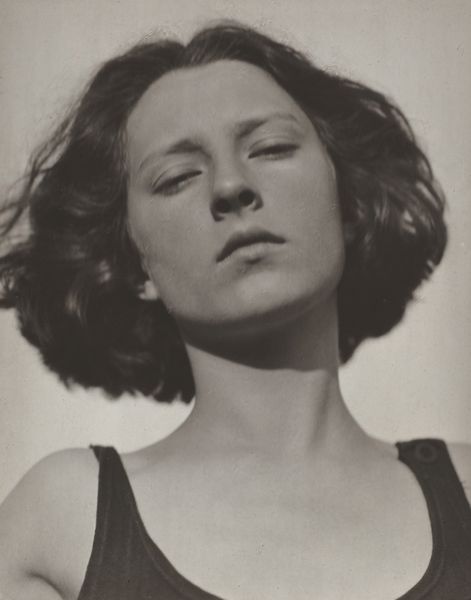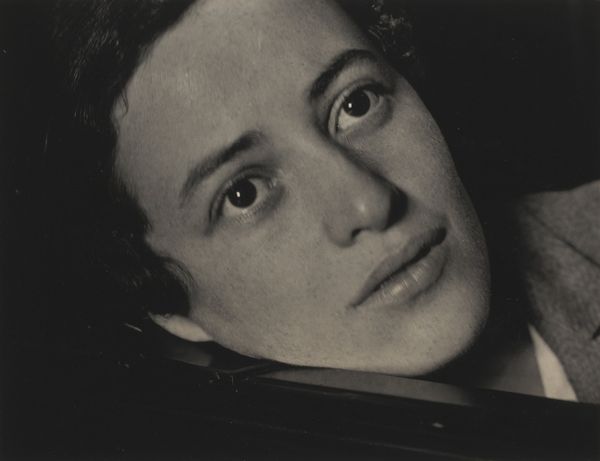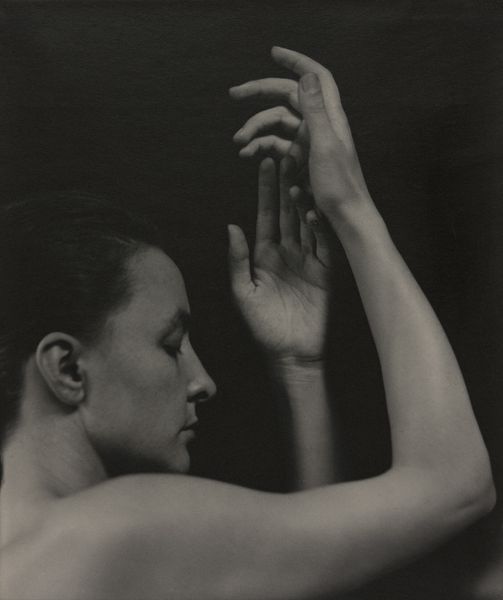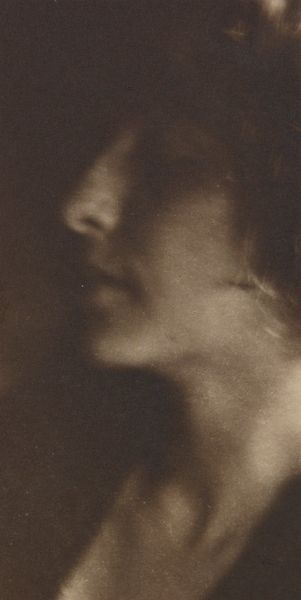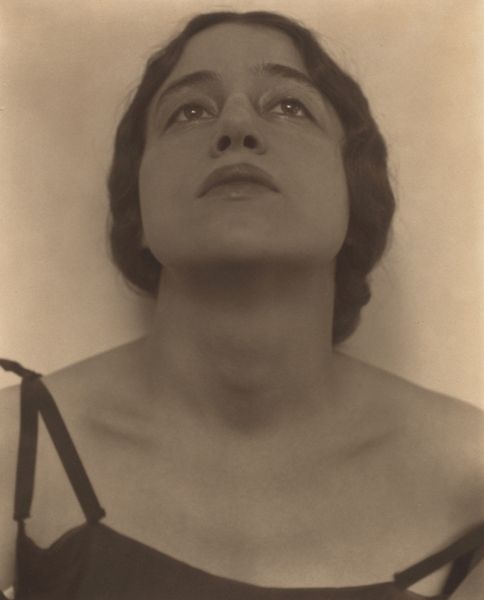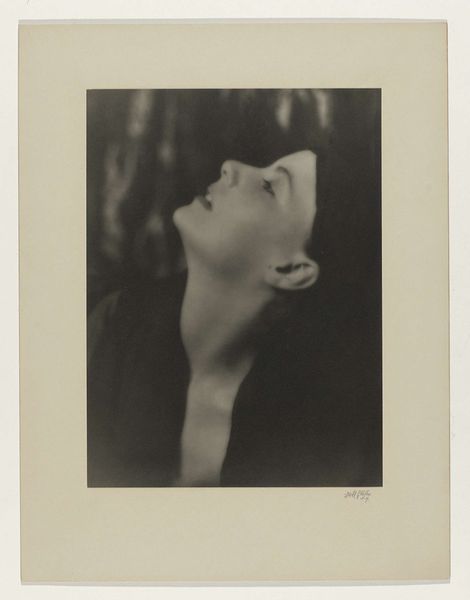
photography, gelatin-silver-print
#
portrait
#
self-portrait
#
pictorialism
#
portrait
#
form
#
photography
#
gelatin-silver-print
#
line
#
modernism
Dimensions: sheet (trimmed to image): 22.5 × 11.9 cm (8 7/8 × 4 11/16 in.) mount: 50.7 × 37.8 cm (19 15/16 × 14 7/8 in.)
Copyright: National Gallery of Art: CC0 1.0
Curator: Alfred Stieglitz created this captivating portrait, "Eva Herrmann," around 1920 using a gelatin silver print. Editor: Striking. The delicate gradation of light gives it an ethereal, almost sculptural quality, like a marble bust emerging from darkness. There’s an arresting severity too; she almost seems stoic, or resigned. Curator: Right. It exemplifies the Pictorialist style, where photography mimics painting, using soft focus and carefully controlled tonal ranges to evoke emotion. Think about what it meant for a woman to have her image crafted in this manner during this period—the role of the male gaze and how the subject interacts or resists it. Editor: Certainly the hand of the artist in crafting the print itself becomes a kind of labor on the image. But there's also Herrmann’s contribution, her posing and performance within that encounter. I wonder about her agency. What part did she have in determining the final representation and in what way would this collaboration be material in itself? Curator: Those power dynamics are certainly at play. Pictorialism, as a movement, also aligns with modernism’s questioning of representation and its deep engagement with identity formation in a rapidly changing world. What can it tell us about evolving societal expectations surrounding femininity and how they may reflect the tensions related to art history and its contemporary theory, particularly related to intersectional narratives that are specific to gender and even perhaps to race at that time. Editor: And thinking about materiality—the gelatin silver print allows for a rich tonality, creating a velvety surface, but how did Stieglitz use these techniques in his darkroom? What manipulations did the print undergo to yield this particular vision? How does Stieglitz work change given the economic climate he created? Curator: Those technological aspects absolutely shape our perception, framing questions regarding how artistic interpretation and social narratives affect us today. I consider this piece to be quite impactful even now, opening new and dynamic viewpoints that create dialog across generations. Editor: Agreed. Exploring it, from process to power structures, has only deepened my understanding.
Comments
No comments
Be the first to comment and join the conversation on the ultimate creative platform.
